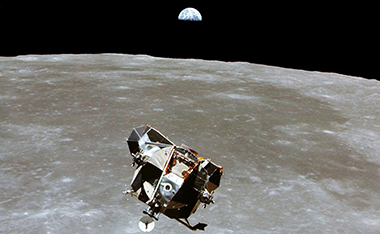On the 50th anniversary of Apollo 11’s moon landing, the National Aeronautic and Space Administration (NASA) is setting its sights on returning to the moon, and going far beyond. The Lunar Orbital Platform-Gateway, a crucial outpost for the U.S. mission to relay astronauts to the moon in 2024, has had a slow start, but the initial module is now under contract.
NASA is also working to send astronauts to the moon’s south pole region by 2024, an area thought to have potential for resources beneficial to deep-space exploration.
When Kennedy said “We choose to go to the moon,” in 1962, he wanted it done by the end of the decade. At the time, Project Mercury, NASA’s effort to get an astronaut into orbit, was already under way. But much of the expertise and machinery that would allow humans to walk on the moon did not yet exist.
“We shall send to the moon … a giant rocket more than 300 feet tall, the length of this football field, made of new metal alloys, some of which have not yet been invented, capable of standing heat and stresses several times more than have ever been experienced…”



